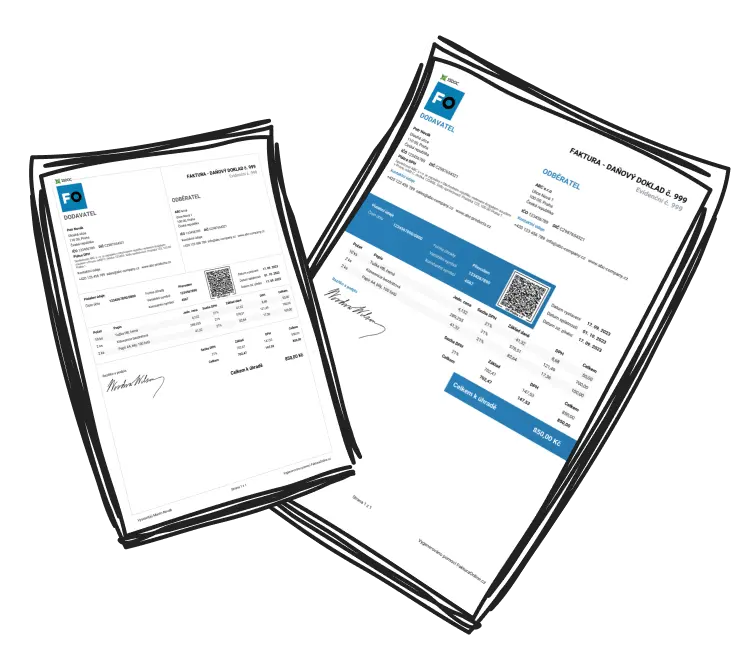Understanding how invoice payments work is essential for small business owners to maintain healthy cash flow and build lasting relationships with clients. This guide will provide clarity on the basics of invoice payments, explain how to process them effectively, and address common challenges while offering actionable tips to ensure smooth business operations.
What is Invoice Payment, and Why Does It Matter?
What is invoice payment? It refers to transactions where buyers pay sellers for goods or services. These payments are guided by a formal document known as an invoice, which details the transaction terms. This process is critical because it helps businesses transform their accounts receivable into much-needed cash flow.
For example, imagine a small store waiting weeks for overdue client payments while struggling to pay rent or suppliers. Delayed invoice payments can disrupt operations, highlight cash flow gaps, and ultimately harm the stability of the business. By understanding how invoice payments work and their role in cash flow management, small business owners can avoid such disruptions.
Invoices are a staple in business transactions because they formalize payments, ensuring sellers receive what they are owed on time. For small businesses, this reliability is essential to sustain day-to-day operations and foster healthy financial health.
How Do Small Business Owners Process Invoice Payments?
Efficiently processing invoice payments is crucial for small business owners to save time, minimize errors, and ensure reliable cash flow. The process generally involves several key steps:
Issuing the Invoice: Business owners create invoices with key information, including the goods/services provided, the amount due, payment terms, and payment methods. Digital invoicing software like QuickBooks or FreshBooks can streamline this step.
Sending the Invoice: Invoices can be sent via email, traditional mail, or through automated software that notifies clients upon issuance.
Receiving Payment: Customers make payments via methods outlined in the invoice, such as checks, bank transfers, credit cards, or digital wallets like PayPal.
Recording Payments: Once payments are received, small business owners record them in their accounting system and reconcile with their bank statements to ensure accuracy.

Tip
Consider adopting invoicing software to automate reminders, enable online payments, and track outstanding invoices. Popular tools include Wave, Zoho Books, and Xero, which simplify financial management for small businesses.
The Anatomy of an Invoice Payment: Key Components Every Owner Should Know
A professional, accurate invoice is central to a smooth invoice payment process and minimizes disputes. Here are the essential components of an effective invoice:
Business and Client Information: Include your business name, logo, contact details, and the buyer’s name, billing address, and account details. This allows for clear identification of both parties.
Invoice Number and Issue Date: Assign a unique number to each invoice and include the date it was issued for proper tracking and recordkeeping.
Description of Goods/Services: Clearly outline what the invoice covers—itemized descriptions, quantities, unit prices, taxes, discounts, and any additional charges.
Payment Terms: State when payment is due (e.g., Net 30) and any penalties for late payments or discounts for early payments.
Total Amount Due and Payment Methods: Display the total prominently and specify how customers can pay, such as bank details, mailing addresses for checks, or links to online payment gateways.
A well-organized invoice not only avoids confusion but also encourages on-time payments. Use invoicing templates to standardize your process and ensure all key details are included.
Why Invoice Payments Are Critical to Your Business Success
Understanding what is invoice payment emphasizes their role as the lifeblood of a small business, ensuring steady cash flow and fostering sustainable operations.
Timely payments allow businesses to cover essential expenses like employee wages, inventory, utilities, and rent. When invoices go unpaid, companies face challenges like delayed operations, strained finances, and disrupted client trust. Overdue payments can even lead to long-term reputational damage.
Efficient invoice management also strengthens relationships with clients, suppliers, and other stakeholders by demonstrating professionalism and reliability. In short, well-handled invoice payments lay the foundation for long-term business growth and sustainability.

Unpaid invoices can cost your business more than just money—it can damage your reputation with clients and jeopardize essential operations.
Troubleshooting: Common Challenges with Invoice Payments and Their Solutions
Here are the most common challenges small business owners face with invoice payments and actionable solutions:
-
Late Payments
Problem: Clients failing to pay within the agreed timeframe.
Solution: Set clear payment deadlines, offer early-payment discounts, and use automated reminders to nudge clients.
-
Disputed Invoices
Problem: Clients disputing the details of an invoice.
Solution: Double-check invoices for accuracy before sending and ensure they include clear itemized descriptions. Be transparent and maintain open communication to resolve disputes quickly.
-
Inconsistent Cash Flow
Problem: Sporadic payments causing financial unpredictability.
Solution: Request upfront deposits or staggered payment schedules. Consider factoring invoices for immediate funds if delays persist.
-
Manual Errors
Problem: Mistakes caused by manual invoice creation and tracking.
Solution: Invest in invoicing software to minimize human error, automate processes, and track outstanding payments in real time.

Tip
Set up proactive follow-up systems with friendly emails or messages 5-7 days before payment deadlines to prevent late payments before they happen.
Final Tips to Master Invoice Payments as a Small Business Owner
Mastering the concept of invoice payment can transform your business by fostering smoother operations and financial stability. Here are some actionable tips to get started:
Regularly review and upgrade your invoicing process to improve efficiency over time.
Leverage automated invoicing tools to handle payments, reminders, and recordkeeping effortlessly.
Build open and professional communication with clients, clearly outlining payment terms upfront.
Keep your financial records organized and ensure timely tracking of payments and outstanding balances.
Don’t hesitate to consult a professional accountant to refine your invoicing strategy—your financial health is worth the investment.
By following these practices, small business owners can streamline their invoice payments, reduce risks, and ensure their company thrives.


